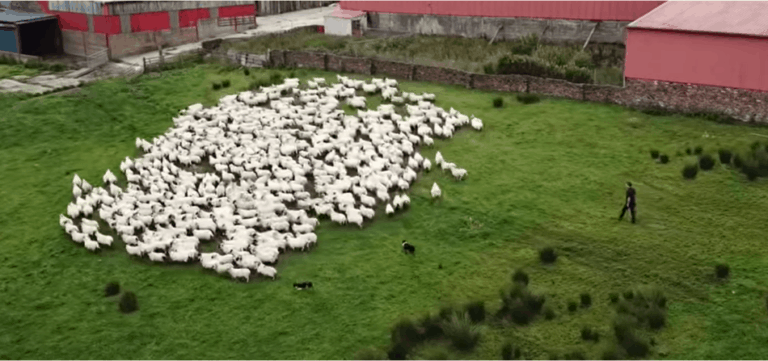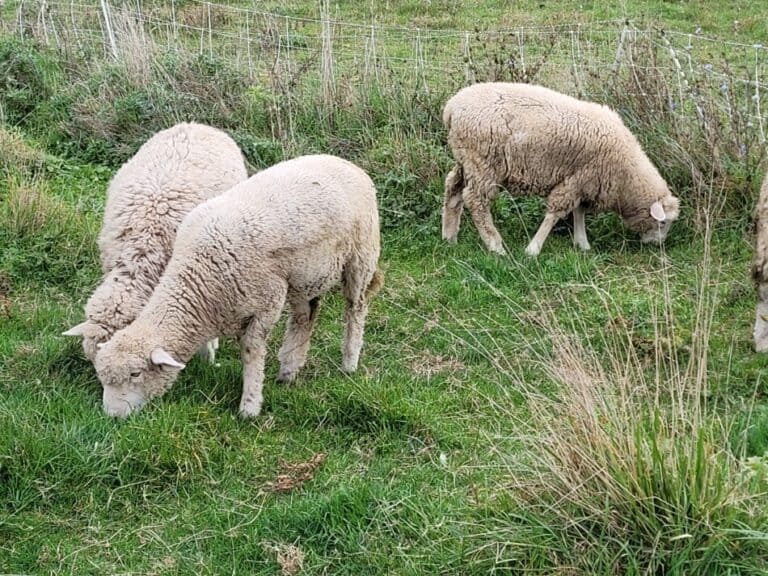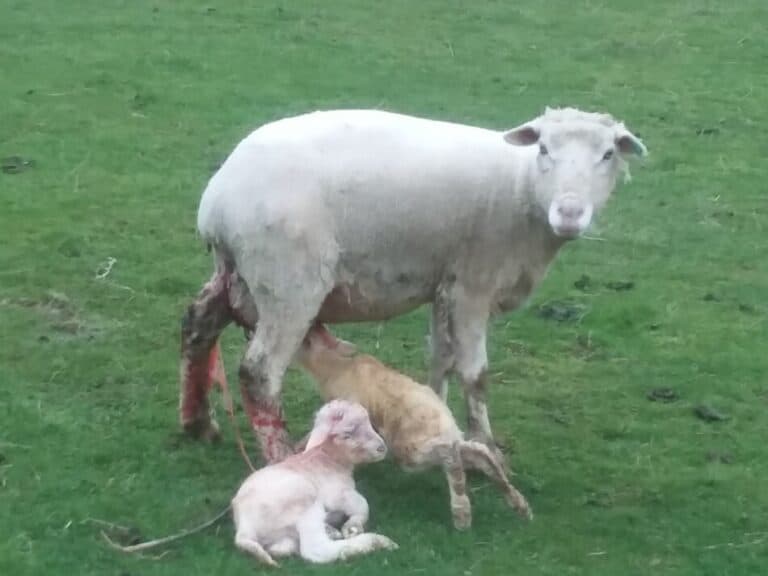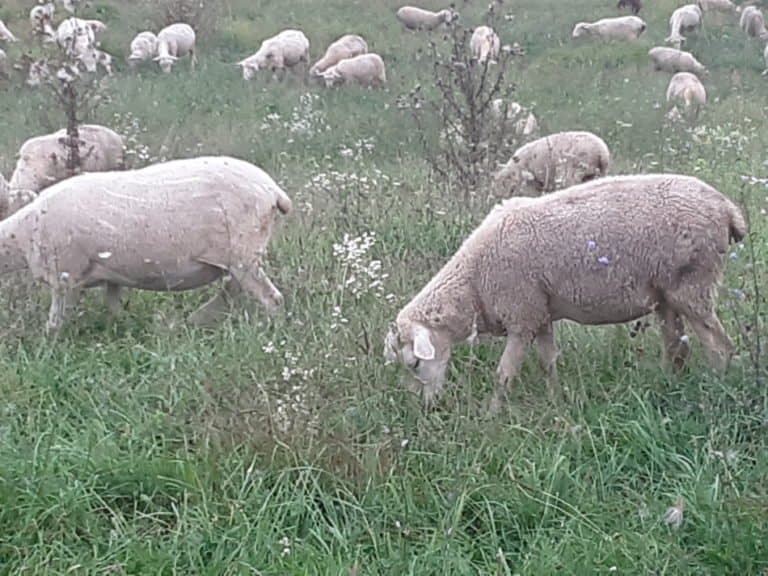7 Reasons Why Lambs Are Rejected Or Orphaned
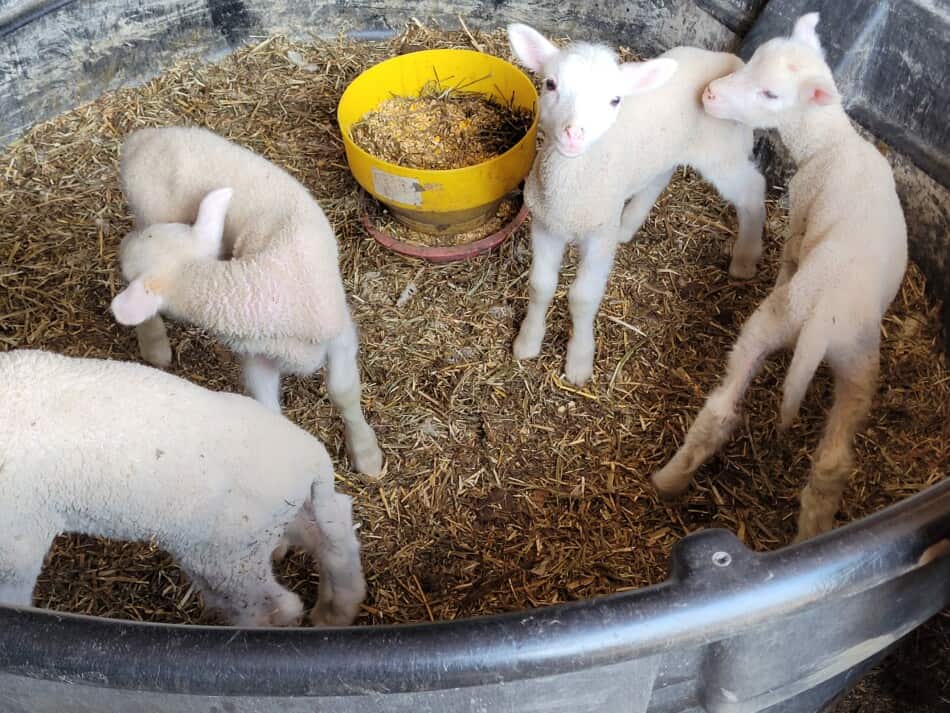
While lambing is always an exciting time for any sheep owner, sometimes things do not go as planned and you end up with a rejected or orphaned lamb.
What happened that made the ewe not take care of her lamb?
Is Keeping Sheep Easy? gives you a look at the life and daily responsibilities of raising sheep for a living on a small farm.
Ewe rejects one or more lambs
Sometimes a ewe will choose to take care of one of her lambs but not the other, even though both lambs are hers biologically and she is capable of taking care of them both.
The main problem here is that she is choosing to leave the lamb, that is different from her being confused in a birth situation, as listed below.
The ewe can reject lambs for a health problem, for instance in the case of a lamb that will die in a day or two and she can tell something is wrong now, or she just prefers one for no real reason at all.
Occasionally, if one lamb needed to be taken away from the mom, for instance to warm it up under a heat lamp and then put it back with her in a few hours, she won’t take it back once it’s warm.
Normally, this is not the case, a ewe can tell by the smell that the lamb is hers, even if it has been away warming up for a few hours, but some ewes will not accept it back once it leaves.
Pros And Cons Of Raising Sheep gives you a look into the good and the not so good of raising sheep on your farm.
Lamb can’t keep up in pasture situation
Another reason for lambs being rejected is that the lamb can not keep up with the mom and the twin on pasture.
This is not so much a case of her rejecting the lamb as she just keeps on trucking and ends up leaving the lamb behind. A slow lamb will need to be a bottle lamb or it will die without feeding.
Great ewes will go slow and keep her lambs with her, oblivious ewes will take off hoping the lambs will follow. Sometimes they can, sometimes they can’t.
Mismothering of lambs
Mismothering of lambs is another source of confusion and problems for new lambs.
Mismothering means that the biological mom is matched up with a non biological lamb, we’ll go over the ways this mismatch can happen.
This is not rejecting lambs at the outset, that happens later. Either way, you end up with momless lambs to take care of.
Scent identification confusion with multiple ewes
Scent confusion seems to show up in one of two ways, multiple ewes giving birth in a small area all at the same time or a lamb wandering into a birth situation.
When multiple ewes are lambing at one time in close proximity to one another, their is an increasing chance for all of the lambs to smell similar and confuse the ewes.
Sometimes this confusion will sort itself out and each ewe will decide on which lambs she is taking and everything is fine, even if they decide to take lambs that are not biologically their own.
This is not a big deal, unless you are keeping strict birth records or registering your sheep, then you have a mess! If you just want moms taking care of lambs, no big deal.
The catch here is that if one of the ewes decides to take another ewe’s lamb but the other ewe wants her lamb, only, now there is a problem. One set of lambs has too many moms and the other set has none.
This is where you need to help them straighten it all out or watch carefully and take in any lambs that get left behind.
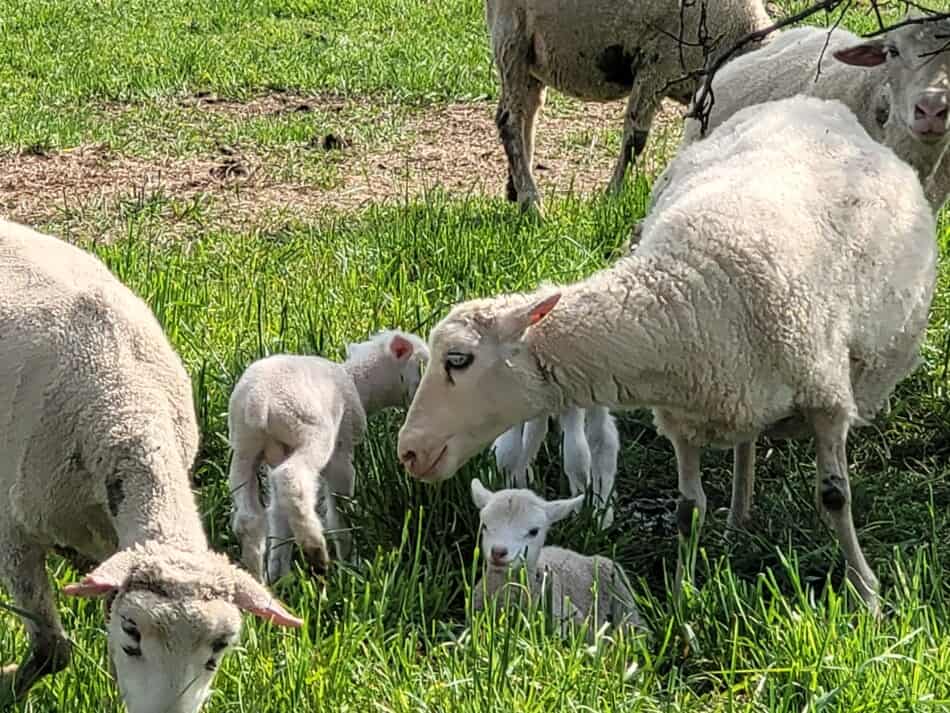
Scent confusion when older lamb is at birth of biological lamb
Sometimes a lamb will end up wandering around looking for a mom and get mixed up with a ewe giving birth, this causes the lamb to smell like the newborn, which can confuse the older lamb’s mom.
Some ewes can figure this out and smell their lamb underneath the birth smells, other ewes can not and will reject the lamb because with the birth fluids on her lamb it does not smell like her lamb, anymore!
Pregnant ewe steals a lamb
Occasionally a ewe that has yet to have her lambs, so she is still pregnant, will be convinced that one of the other ewe’s lambs is hers and she’ll steal it away from it’s real mom.
This situation ends up a mess and here’s why: as soon as the stealer has her babies, she’ll get rid of the other lamb, which will smell different than her biological lambs, leaving the stolen lamb without a mom.
This lamb has been rejected by the stealer and will starve unless it is bottle fed.
Ewe is lacking maternal instinct
A ewe can reject her own lambs because the ewe lacks maternal instincts.
In this case, at least in our experience, the ewe is usually the more nervous type and abandons the lambs when the rest of the flock moves away or the shepherd comes to help.
It’s not so much that she does not like the lambs, it is more that she is not adamant about staying with them, like a good ewe with strong maternal instincts would be.
Whenever we have to move newborn lambs, for instance to take them closer to the barn for the night to keep them safe from predation, there is a risk of a flighty ewe not taking them back.
This is a poor mom that is lacking maternal instincts. Any ewe that flips out and permanently leaves her lamb is a cull.
No ewe wants you to grab her lambs, but a good mom would be right there hurrying close behind the carried lambs, calling to them and coming right up to take care of them as soon as the lambs are put down.
What I’m trying to point out here is that it’s not the moving of the lambs that is the problem, it’s the instincts of the ewe being off the mark that causes her to stress out and reject her lambs.
Of course, ideally we never have to mess with any of the lambs, but this is real life so things come up that must be dealt with which occasionally means upsetting a ewe to keep the lamb out of danger.
Keeping Sheep Safe From Predation gives you some ideas on how to protect your flock.
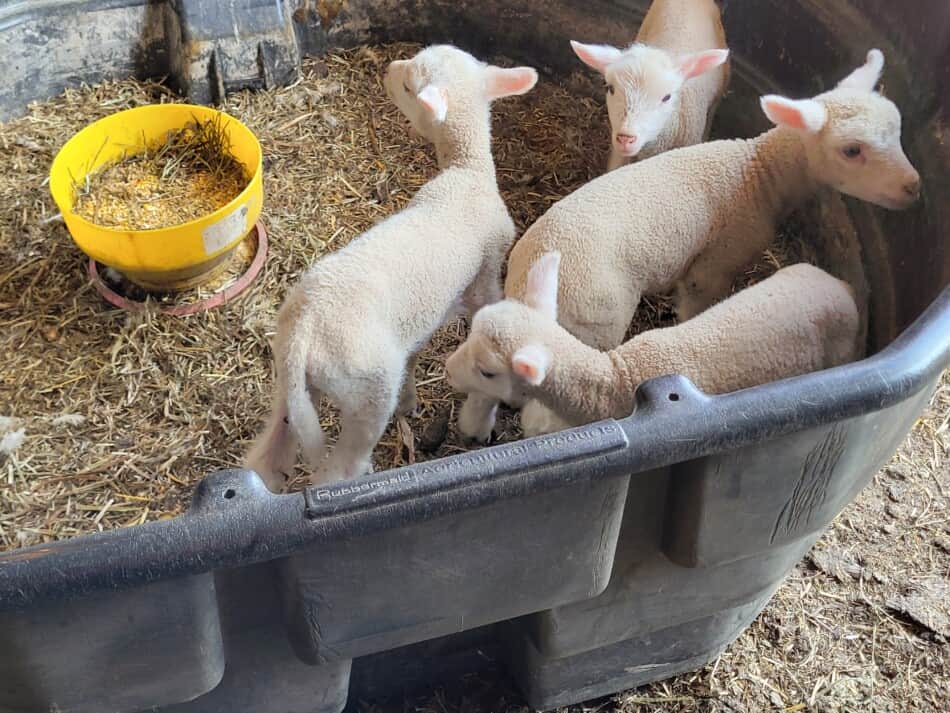
Ewe unable to handle multiple lambs, lacking milk
In a multiple birth situation, some ewes do not have them milking ability to support all the lambs that they gave birth to.
This could be a ewe with enough milk for twins, but you have to take the third or a ewe that can only support one of her two lambs.
This is another case of not exactly rejection, but a lamb that needs bottle fed because of lack of milk volume.
If the ewe cares for both lambs equally, you can try to bottle feed one or both in hopes that her milk supply will increase enough to support both lambs.
You’ll know this is the case when the bottle baby does not come for the bottle anymore!
It’s a bit of a different case with triplets.
We take the smallest or weakest triplet as a bottle baby and leave the ewe with twins. Not too many ewes can handle triplets, especially in pasture conditions.
It seems that one of the triplets ends up falling behind more often than not, so we take one from the get go and leave the ewe to raise twins.
Ewe has no milk
Occasionally a ewe will lamb but not come into milk.
This is unusual and an urgent problem for both you and the lamb. If the baby is born early, she may come into milk in a day or so, but more than likely that she is out for the season and you have a bottle baby.
If you are able, you can bottle feed the lamb multiple times per day and keep it with the ewe, just so it has a mom to hang out with.
If you have other bottle lambs, it’s probably easier to add this one to the group and sell the ewe.
Ewe is sick or died
If a ewe is unable to take care of a lamb, that lamb is now an orphan.
While this is not very common, it is possible for a ewe to die in birth or even while the lamb is still nursing which would be due to something more common, like bloat.
Saving And Fostering Lambs is a PDF from Lincoln University by Helen A. Swartz that goes over multiple ways to help prevent lamb rejection and what to do when it happens.
This is an older publication, 1981, but don’t let that throw you! It’s easy to understand and covers quite a few of the things you’ll need to know when your flock is lambing, definitely worth reading!
